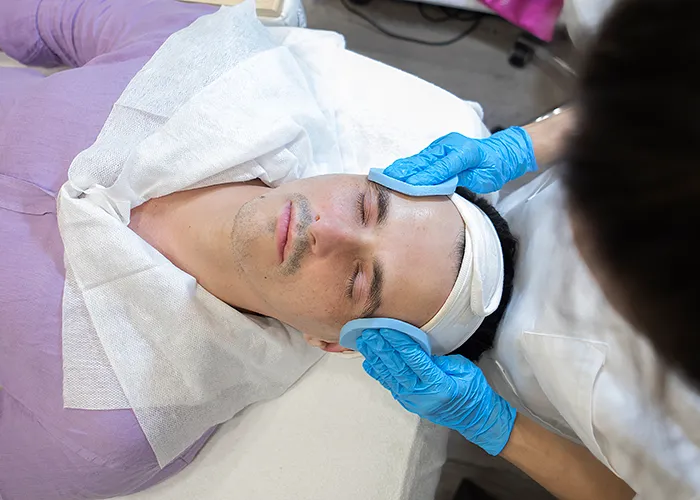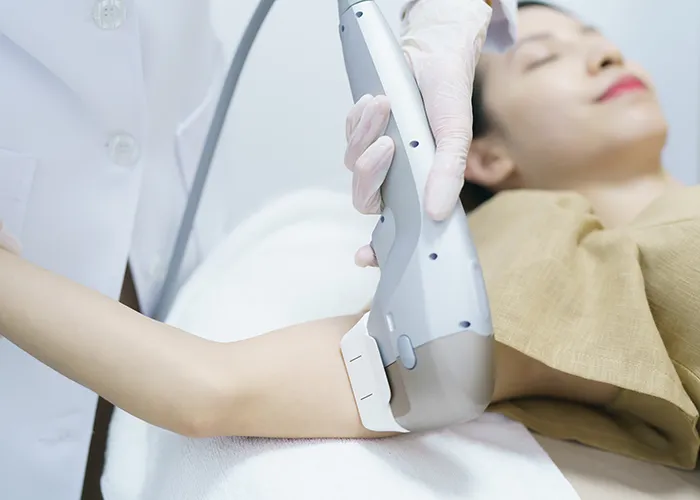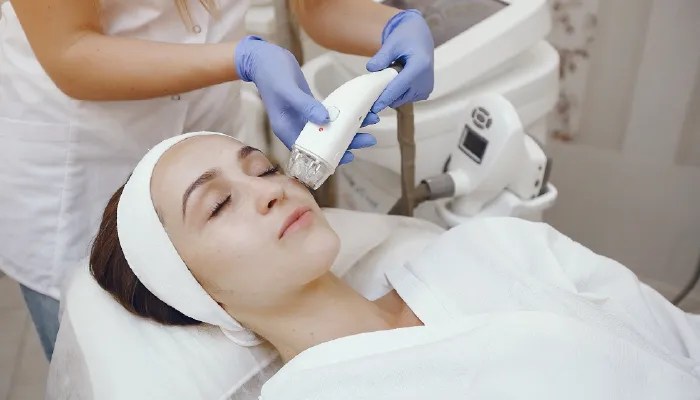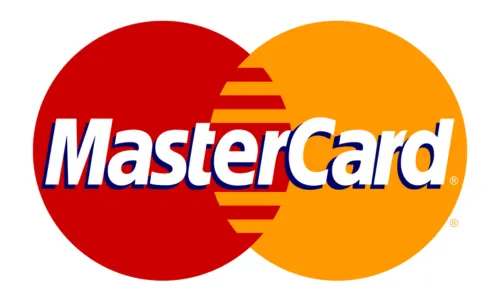What is Laser Treatment?
Laser therapy uses focused beams of light to treat damaged areas of the body. It can remove tumors and other growths, improve vision, stop hair loss, and treat pain. Laser therapy can also improve the appearance of scars. Laser treatment for scars is an outpatient procedure. The doctor repeatedly moves a laser wand over your skin to remove damaged skin cells and diminish scars. These include injury scars, acne scars, dark spots, age spots, and other types of hyperpigmentation. Laser scar treatments don’t make a scar disappear. Instead, they’re designed to make a scar appear less noticeable. The body begins the process of repairing a wound after a skin injury. A scab develops over the injury to protect it from germs, then eventually falls off. Sometimes, the skin underneath a scab is the same color as the rest of the body. However, depending on the depth of the injury, a scar often remains after a scab falls off. These scars may fade or become lighter with time. When a scar becomes permanent, laser treatments can be used to remove the outer layer of the damaged skin’s surface. They basically smooth the skin to improve tone and appearance. These lasers are also used to target blood vessels in the scar tissue and reduce redness. They can also penetrate the skin’s surface to stimulate the production of new skin cells.
Who Can Do Laser Treatment?
The laser treatment is suitable for all ages and can lighten age spots and dark spots, fade freckles, reduce wrinkles and fine lines, shrink pores, and remove blackheads and acne. Carbon Peel Laser is a painless treatment which gently exfoliates a layer of our facial skin giving a refreshed appearance with brighter and even skin tone. As the laser penetrates the deep layers of the skin, it is meant to stimulate collagen production, meaning firmer, more youthful looking skin.
The Benefits of Laser Treatment For Skin
- Reduces fine lines and wrinkles
- Tightens dilated pores
- Reduces acne,
- Scars and post acne discoloration
- Removes dead skin cells from the superficial epidermal layer
- Stimulates collagen growth
- Improves skin texture
- Clears pores to help reduce blackheads and whiteheads.
The Other Benefits of Laser Treatment
Laser therapy uses focused beams of light to treat damaged areas on the body. It can remove tumors and other growths, improve vision, stop hair loss, and treat pain.

Laser Treatment For Melasma
Melasma is a common skin problem. The condition causes dark, discolored patches on your skin. It’s also called chloasma, or the “mask of pregnancy,” when it occurs in pregnant women. The condition is much more common in women than men, though men can get it too. Symptoms of melasma: Melasma causes patches of discoloration. The patches are darker than your usual skin color. It typically occurs on the face and is symmetrical, with matching marks on both sides of the face. Brownish colored patches usually appear on the: cheeks, forehead, bridge of the nose, chin. It can also occur on the neck and forearms. The skin discoloration doesn’t do any physical harm, but you may feel self-conscious about the way it looks. we use Spectra Q-switched Nd-YAG lasers machine, which release energy in a single, powerful pulse. This laser is often the treatment of choice for melasma removal because it only causes minor discomfort compared to other treatments. Some melasma are stubborn and persistent, it might require multiple sessions of laser treatment.
Laser For Scars
Laser therapy can also improve the appearance of scars. Laser treatment for scars is an outpatient procedure. The doctor repeatedly moves a laser wand over your skin to remove damaged skin cells and diminish scars. These include: injury scars, acne scars, dark spots, age spots, and other types of hyperpigmentation. Laser scar treatments don’t make a scar disappear. Instead, they’re designed to make a scar appear less noticeable. The body begins the process of repairing a wound after a skin injury. A scab develops over the injury to protect it from germs, then eventually falls off. Sometimes, the skin underneath a scab is the same color as the rest of the body. However, depending on the depth of the injury, a scar often remains after a scab falls off. These scars may fade or become lighter with time. When a scar becomes permanent, laser treatments can be used to remove the outer layer of the damaged skin’s surface. They basically smooth the skin to improve tone and appearance.
Laser For Acne Scars
We uses the CO2 EDGE ONE Laser, to promote new skin cell and also to reduce visible scarring on the face. This laser also helps to brighten up the skin as it is good to even out skin tone, to make the skin smoother and softer as well as less appearances of new acne. This laser also helps to rejuvenate the skin and make the skin firmer and healthier.

Laser Vaginal Tightening(LVT)
It is a minimally invasive treatment for expanded vaginal channel. Unique vaginal applicator using the Fractional CO2 Laser (10,600nm) is applied along the vaginal channel until the full tissue coverage is achieved. The laser-induced thermal effect on the vagina wall stimulates collagen remodelling and nucleogenesis in the mucosa tissue, resulting in tighter vaginal channel. You’ll expect from the treatment:
1. Tightening of the vaginal channel
2. Increase in the elasticity of vaginal wall
3.Decrease in the diameter of internal and external vagina
4.Relieves the symptoms of urinary incontinence relieves the symptoms of gynaecological diseases.
Stress Urinary Incontinence Laser Treatment
Urinary incontinence can occur while Laughing, sneezing, coughing or exercising. This is common in young mothers, but it can occur at all ages. It is usually treated with pelvic physiotherapy (and sometimes even surgery), but nowadays it can also be treated with a painless vaginal laser treatment. With a vaginal laser treatment, the vaginal wall is strengthened. The laser stimulates the mucous membranes and the underlying connective tissue of the vagina, So the vagina better supports the urethra. The treatment takes place at the outpatient clinic and can be performed without local anaesthesia. 3 treatments are required every 4-6 weeks. Thereafter, every 1-2 years, 1-2 treatments are needed to maintain the effect.









